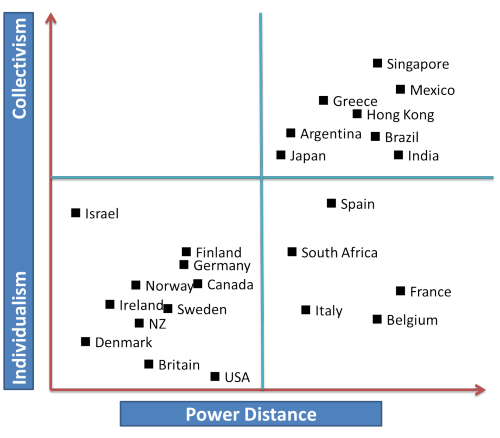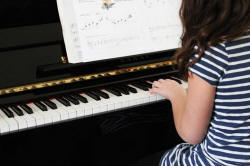TKT Module 1: Background to language learning
Learner characteristics

Everyone is different from everyone else so we must be careful
not to stereotype or classify people too easily.
It is very attractive to be able to put our learners in neat little
boxes but it just isn't possible and it is almost never very
helpful.
 |
Key concepts in this guideBy the end of this guide, you should be able to understand and use these key concepts:
|
Look out for these words like this
in the text.
There will be tests at the end of the guide for you to check that
you understand the ideas.
 |
Learner strategies |
Learning a language, like playing a good game of chess, is not
easy and we all have different ideas about how to do it.
The strategies we use in our learning come from three sources:
- Our personality

For example, some people are comfortable talking to strangers, asking questions and making mistakes in a language; some are not. Some people have good memories for words and like to solve problems; some don't. This is nothing to do with learning styles – it's just how people are. - Our previous learning experiences

Adults in particular will often feel uncomfortable if they are asked to try learning in a way that is very different from what they did at school. For example, if the teacher doesn't lead the class all the time and correct all their mistakes, some learners may feel that they aren't learning. - Our culture

In some cultures, people take more risks than they do in others. In some cultures, making a mistake in public is something to avoid and in others, it doesn't matter too much. In some cultures, talking a lot (and loudly) is OK, in others it is a sign of being immature and silly. In some cultures, teachers are very authoritative and in others the relationships are more equal.
  |
Task 1:
What effect do you think these three areas (personality,
experience and culture) will have in
the classroom? Click here when you have thought of and written something. |
- People's personalities are generally quite stable so if you have learners who don't like taking risks or have no interest in solving problems in the classroom, you have to accept it and work around the issue. Forcing people to do things they don't like is not usually a very helpful tactic.
- There is nothing you can do to change people's experiences, of course, so if you are trying to introduce something new to them that they may not trust, you need to be careful to explain why and how it will help.
- Culture, too, is quite stable and fixed but people can be aware of their own cultural limits and take advantages to act outside their usual behaviour. But it's not easy, so be patient.
 |
What strategies do good language learners use? |
There has been quite a lot of research in this area but the results are not very conclusive. Here are nine strategies which some people think that good language learners use. Do you agree?
- Good learners know where they are going and why they need to learn a language. They set clear goals for themselves on that basis.
- Good learners organise information carefully using, e.g., cards and notes and separate notebooks for different topics.
- Good learners take risks and experiment with language to see if they are right.
- Good learners use opportunities to interact with speakers of the target language.
- Good learners tolerate uncertainty.
- Good learners use mental tricks like mnemonics and words associations to remember words.
- Good learners use their knowledge of other languages and their first language(s).
- Good learners make good guesses.
- Good learners learn chunks of language to help them be fluent and accurate even if they don't understand all the grammar and words they are using in the chunk.
 |
Learning styles |
This site does not have very much sympathy with
learning style
theories but the TKT syllabus contains reference to them so you
should have some understanding of three of the main ideas. For
more, see
the guide to learning styles on this site.
There are well over 70 different theories and most of them (perhaps
all of them) are
probably wrong.
| Theory | Types of learning style | Implications in the classroom |
Multiple-intelligence theory |
7 types of intelligence: Linguistic intelligence: words and language Logical-Mathematical intelligence: logic and numbers Musical intelligence: music, sound, rhythm Bodily-Kinaesthetic intelligence: body movement control Spatial-Visual intelligence: images and space Interpersonal intelligence: other people's feelings Intrapersonal intelligence: self-awareness |
People with high
linguistic intelligence make better
language learners and teachers. People with high logical-mathematical intelligence deal more easily with deductive modes of learning. People with high musical intelligence have better pronunciation People with good interpersonal intelligence like group work. |
VARK |
|
We should cater for
all four learning styles in our planning of teaching. This
means making sure we have a range of activity types to suit
all the styles so that all our learners get the kind of
input to which they best respond. Another consideration is to make sure that we don't believe that something that is easy for us with our particular learning-style mix will be easy for everyone. People with different mixes will not always agree or respond well. |
Honey-Mumford
(based on Kolb) |
|
We should cater for
all four types of learners in our planning. This means
making sure we have a range of activity types to suit all
the styles so that all our learners get the kind of input
and activity to which they best respond. We should make sure that we don't fall into the trap of thinking that something which is an attractive procedure and task type for us will also appeal to all our students. Language teachers tend to be activists and pragmatists but our learners do not always follow that pattern. We should constitute groups for tasks to have a mix for some tasks but not for others because their approaches will be very different. |
 |
Age differences |
Again, we must be careful not to characterise people too much but there are some obvious differences between the behaviours of children and adults that affect what we do in the classroom. Here are some ideas.

The implications are fairly obvious, aren't they?
 |
Cultural influences |
We must be careful to avoid crude cultural stereotyping
along the lines of "All English people are reserved and
cold-blooded", of course, but some approaches to learning and
studying are obviously culturally produced.
A major body of work in this area has been done by Geert and Gert
Jan Hofstede and a good deal of information is available on their
website at www.geerthofstede.nl.
There are four ideas which are most useful for us:
- Power distance
- refers to the amount of authority some people in society have
- Uncertainty avoidance
- refers to people's willingness to take risks and tolerate uncertainty
- Collectivism and Individualism
- concern how much people are prepared (or not) to put the needs and good of society before the individual
Here's a table of the relationship between Uncertainty Avoidance and Power distance for some major cultures rather freely adapted from the Hofstede site.

For example, Britain, Denmark, Sweden and Ireland
have small power distances and weak uncertainty avoidance. Learners from these cultures will expect a
large measure of equality between students and teachers and are
willing to take risks.
Students from cultures such as
Japan, Portugal and Greece, which have large power distances and
low tolerance of uncertainty, may be unwilling to take risks in the classroom and
expect the teacher to be in charge. They may even become anxious if they find
that they are expected to experiment with language and work in pairs
or groups without the supervision of the teacher.
Here's another considering the second pair of characteristics.

Note, for example, that individualistic societies often
exhibit small power distances and that collectivist societies
usually show large power distances.
This may well affect many facets of classroom dynamics, the way
tasks are approached and much else, potentially. There are two
articles on this site
which will tell you more.
 |
Self-test questions |
Before you go on, make sure you can answer these questions. If you can't, go back to the sections which give you trouble.
- Give an example of how a person's cultural background may effect how they want the teacher to behave?
- Give two examples of learning style theories.
- How can age make a difference to how someone learns?
If you are happy with your progress, go on.
 |
Tests and practice for TKT |
| Test 1 | A short quiz |
| Test 2 | A gap-fill test |
Return to the Module 1 index:
![]()
or go on to the next
guide which is to learner needs.
